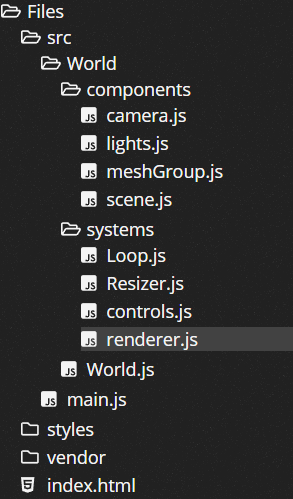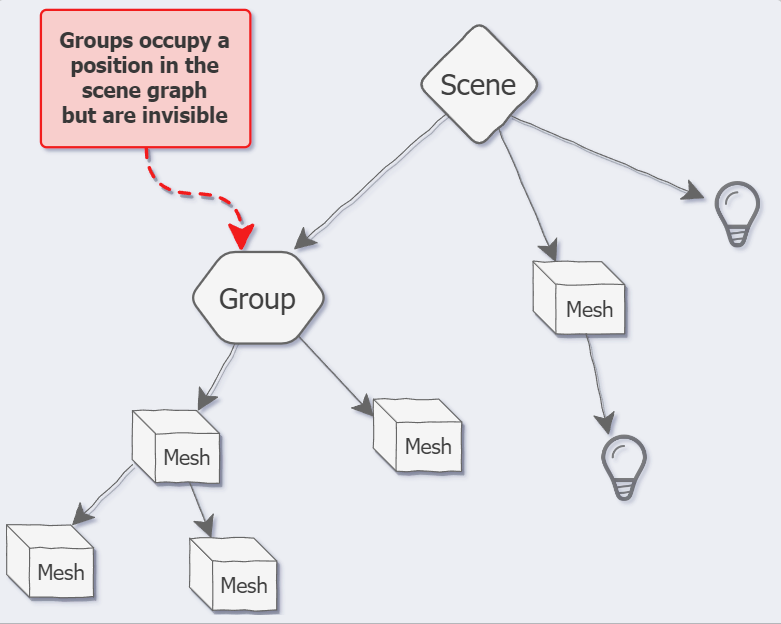组织你的场景
此笔记记录于DISCOVER three.js,大多数为其中的摘要,少数为笔者自己的理解
目录

meshGroup.js
js
import {
SphereBufferGeometry,
Group,
MathUtils,
Mesh,
MeshStandardMaterial,
} from 'three';
function createMeshGroup() {
// a group holds other objects
// but cannot be seen itself
const group = new Group();
const geometry = new SphereBufferGeometry(0.25, 16, 16); // 球
const material = new MeshStandardMaterial({
color: 'indigo',
});
const protoSphere = new Mesh(geometry, material);
// add the protoSphere to the group
group.add(protoSphere);
// create twenty clones of the protoSphere
// and add each to the group
for (let i = 0; i < 1; i += 0.05) {
const sphere = protoSphere.clone();
// position the spheres on around a circle
sphere.position.x = Math.cos(2 * Math.PI * i);
sphere.position.y = Math.sin(2 * Math.PI * i);
sphere.scale.multiplyScalar(0.01 + i);
group.add(sphere);
}
// every sphere inside the group will be scaled
group.scale.multiplyScalar(2);
const radiansPerSecond = MathUtils.degToRad(30);
// each frame, rotate the entire group of spheres
group.tick = (delta) => {
group.rotation.z -= delta * radiansPerSecond;
};
return group;
}
export { createMeshGroup };clone
- three.js中几乎所有的对象都有一个
.clone方法,它允许您创建该对象的相同副本。 clonedMesh也具有与mesh相同的几何体和材料。但是,几何体和材质不是克隆的,它们是共享的。如果我们对共享材质进行任何更改,例如,更改其颜色,所有克隆的网格将与原始网格一起更改。如果您对几何体进行任何更改,这同样适用。- 但是,您可以给一个克隆一个全新的材料,而原来的材料不会受到影响。
- 自定义属性不会克隆,如
.tick
组Group介绍
组在 场景图中占据一个位置并且可以有子对象,但它们本身是不可见的。如果Scene代表整个宇宙,那么您可以将Group视为该宇宙中的单个 复合 对象。

每个场景对象都有继承自Object3D的.add和.remove的方法,就像Group和Scene本身一样, 每个对象都可以在场景图中占据一个位置并拥有子对象。不同之处在于组是 纯粹的可组织对象。其他场景对象,如网格、灯光、相机等,除了在场景图中占据一席之地外,还有其他用途。但是,组的存在纯粹是为了帮助您操纵其他场景对象。